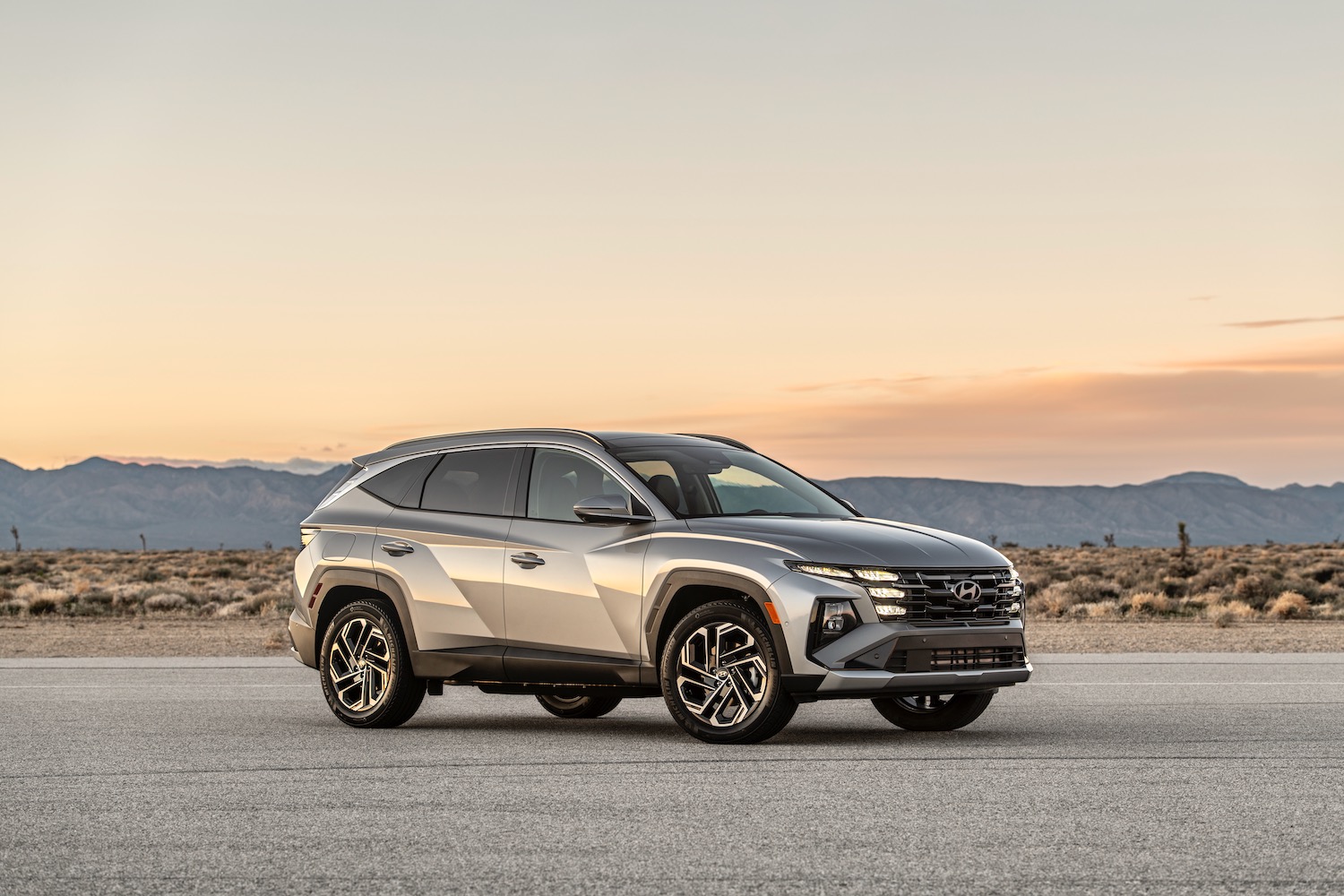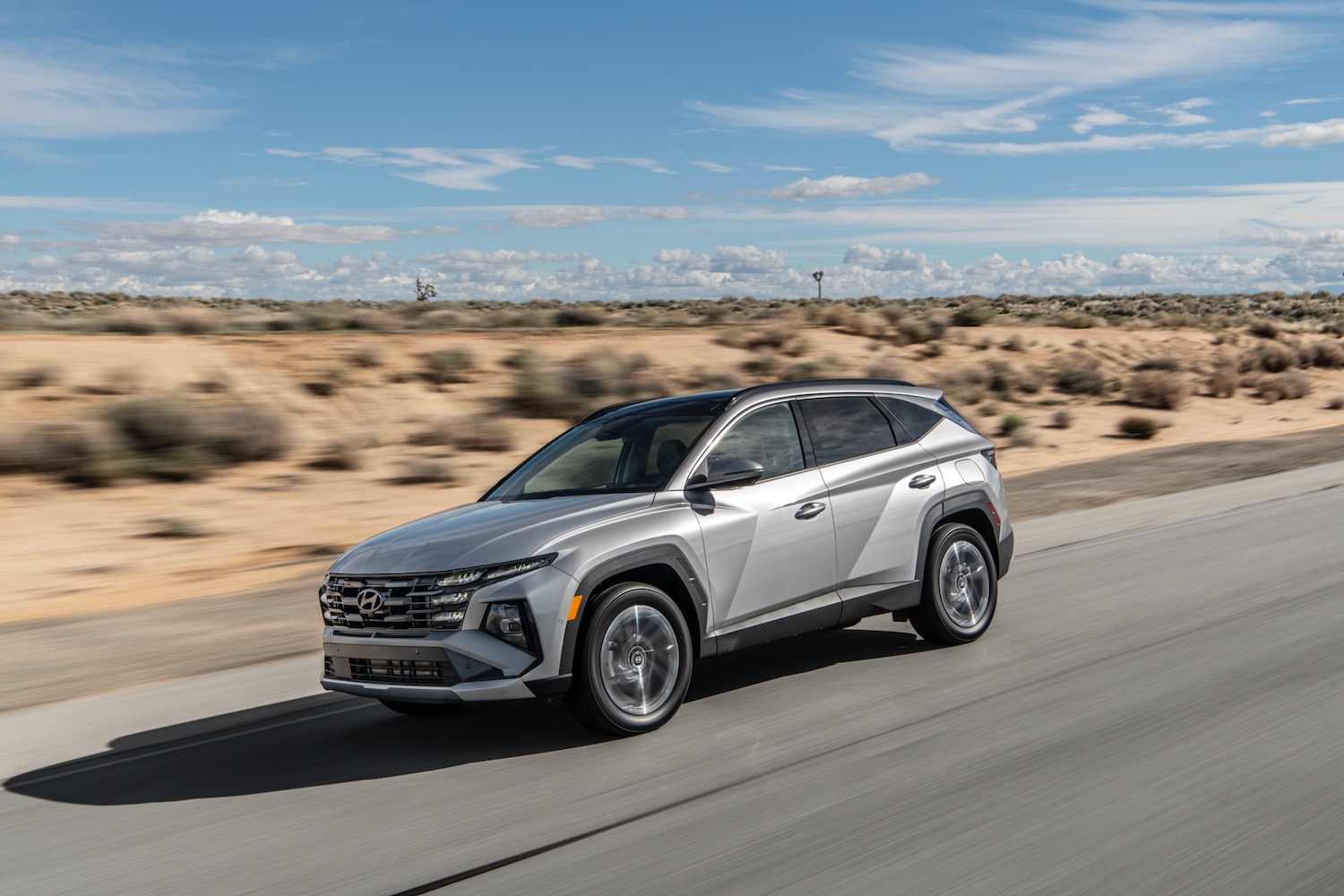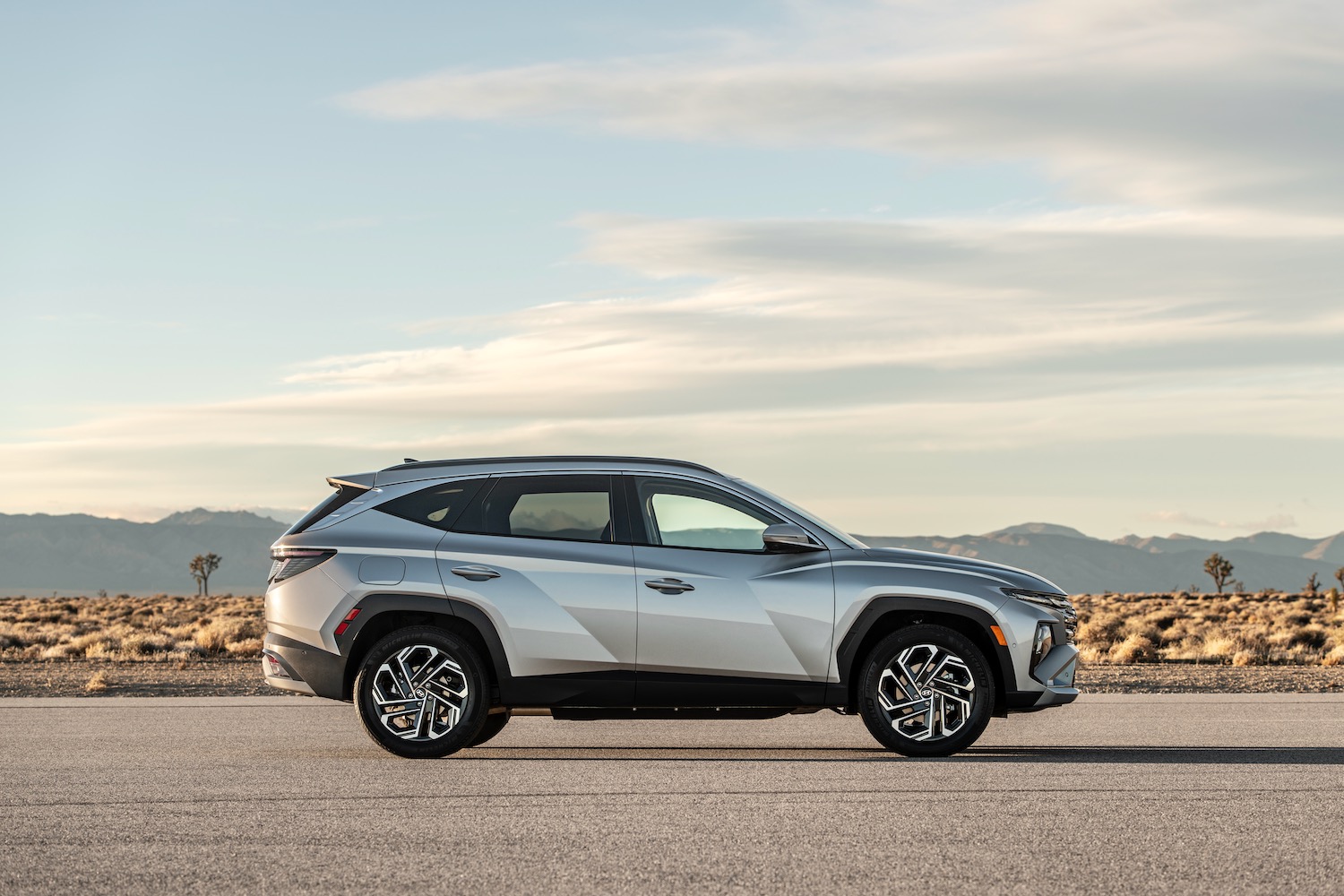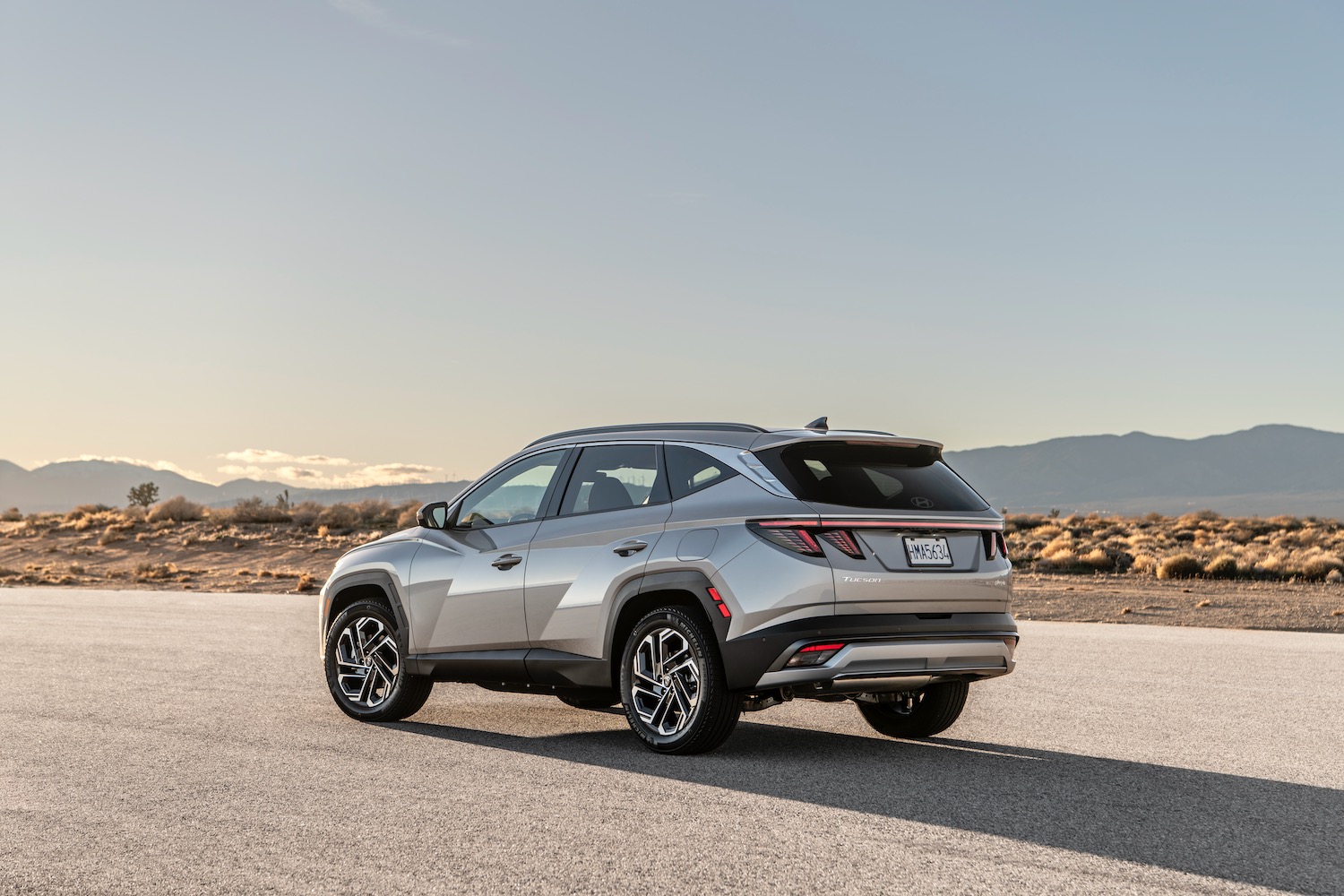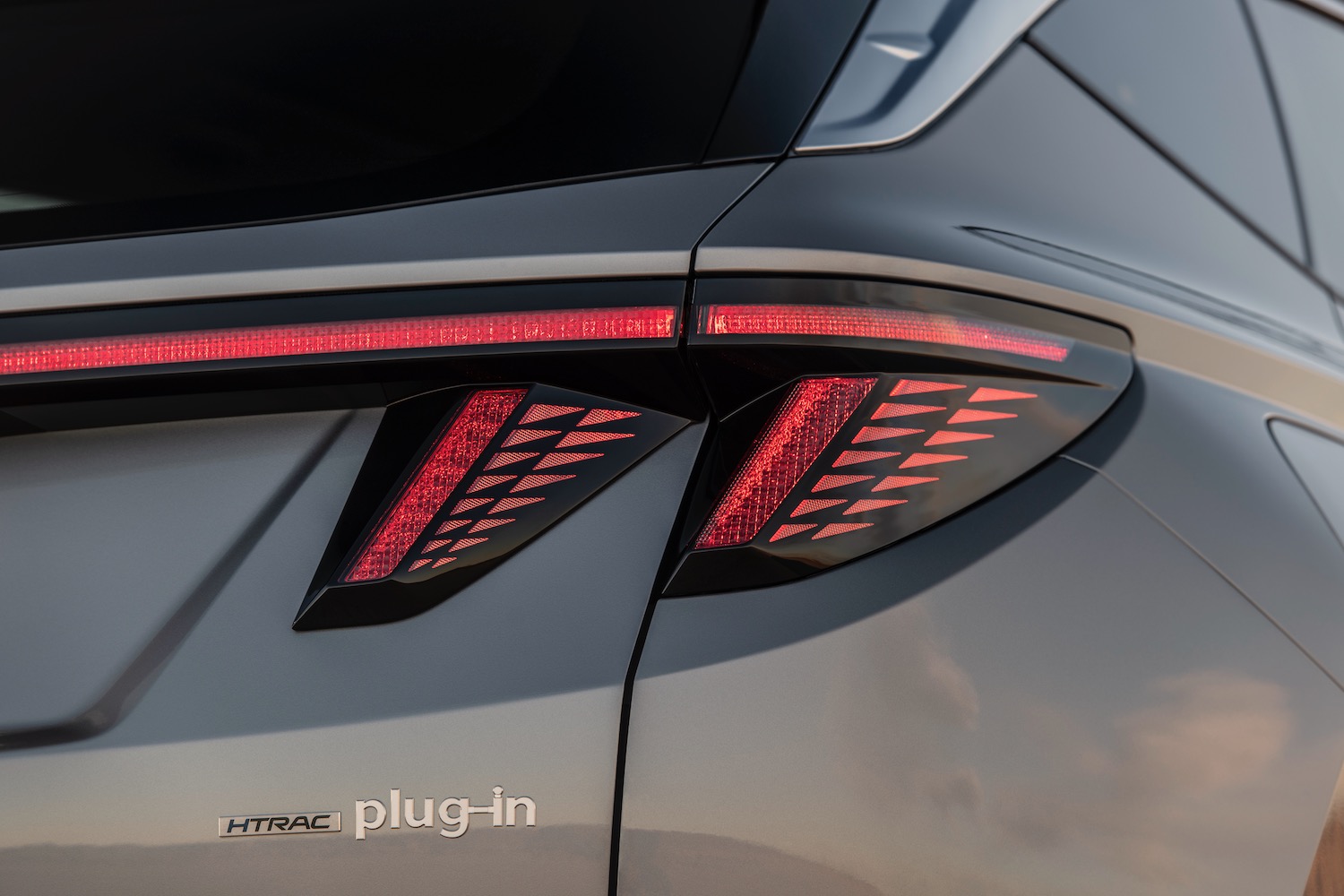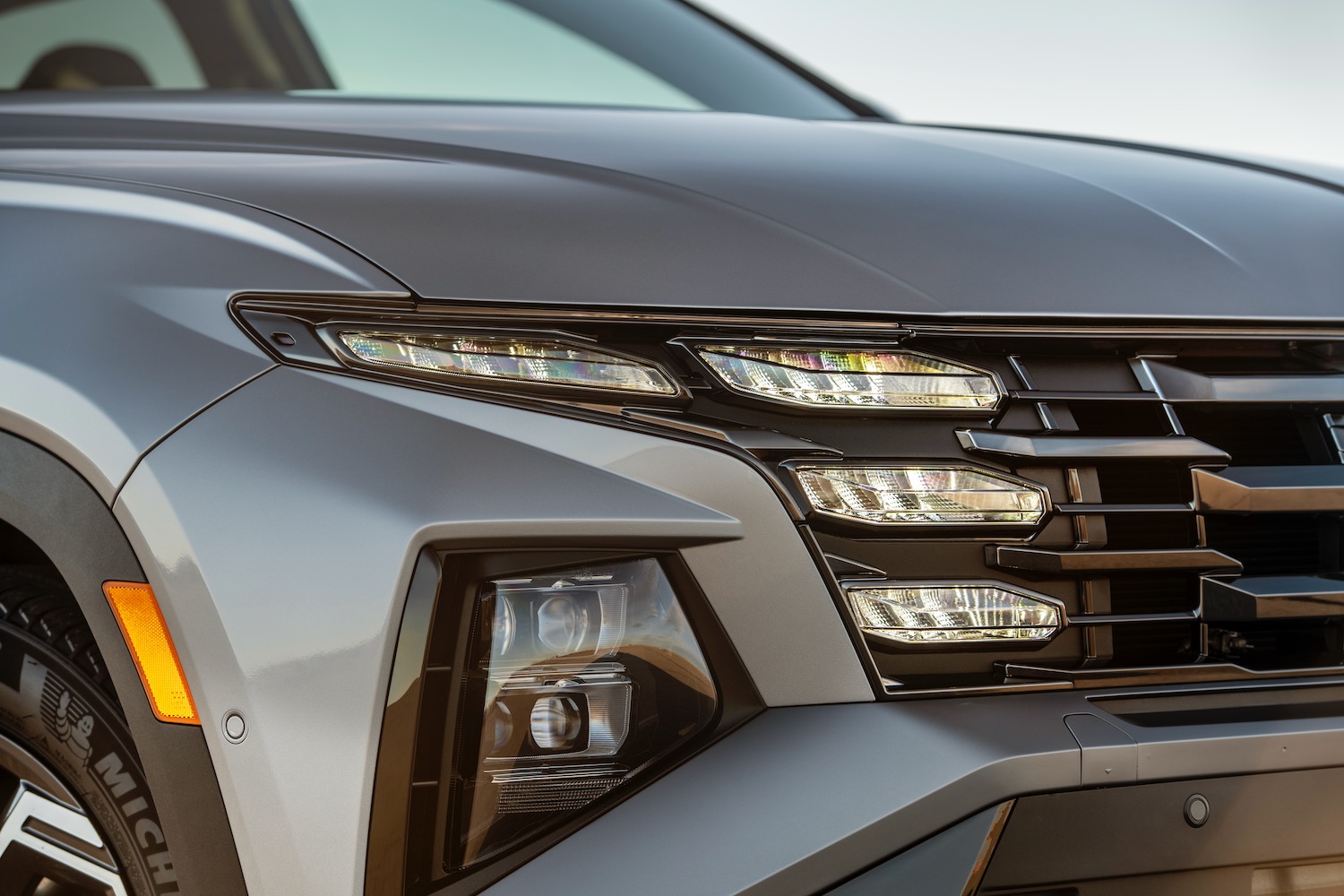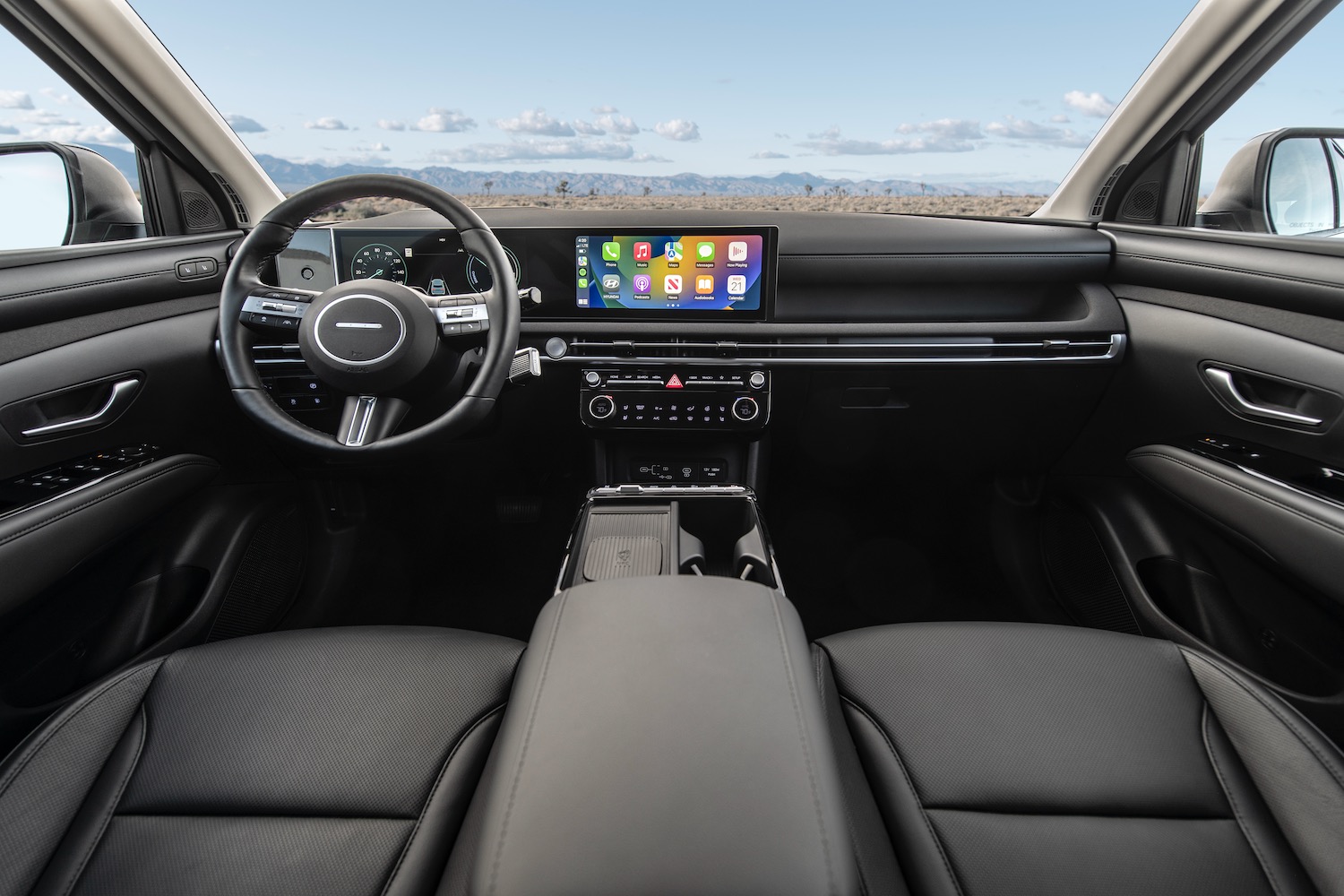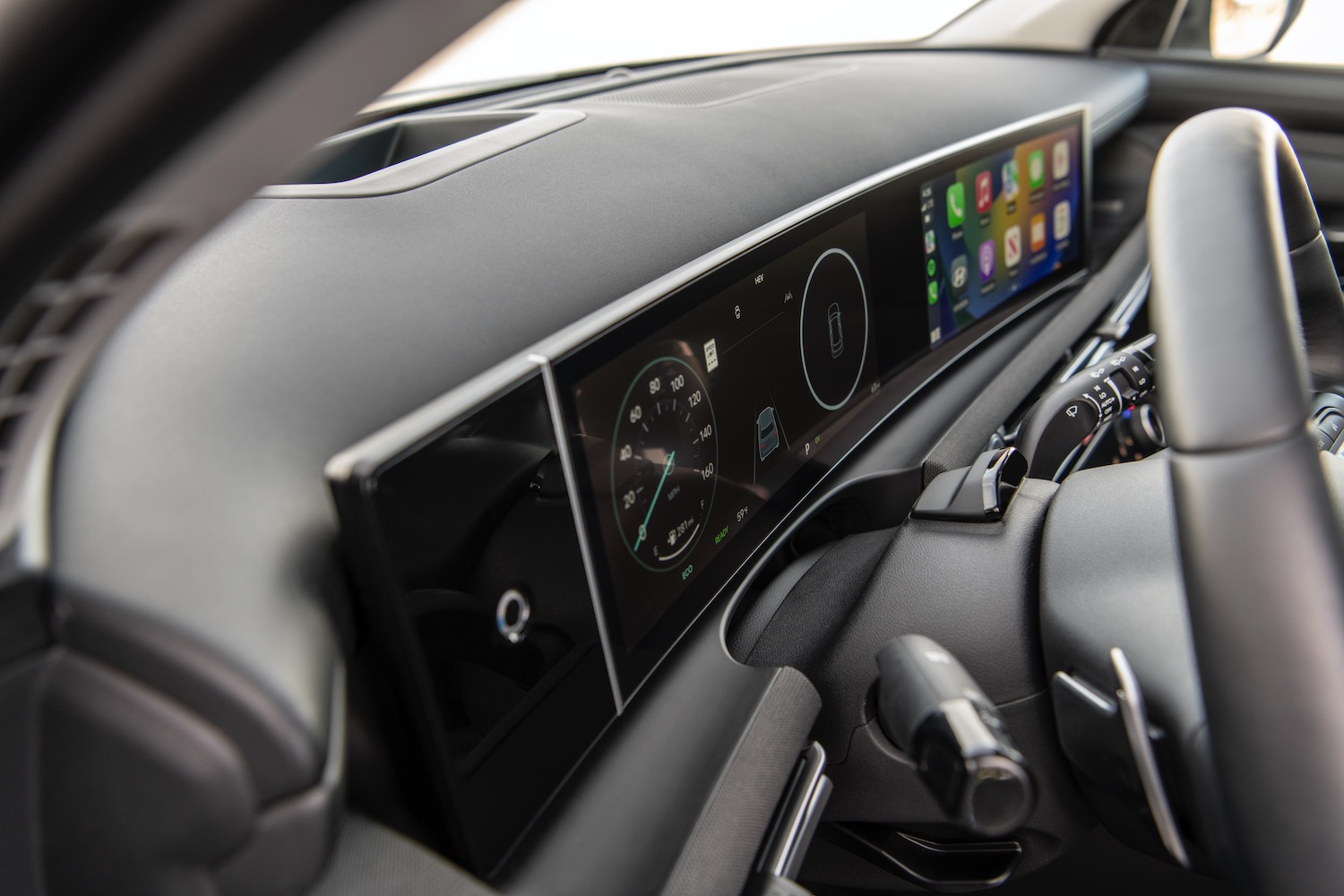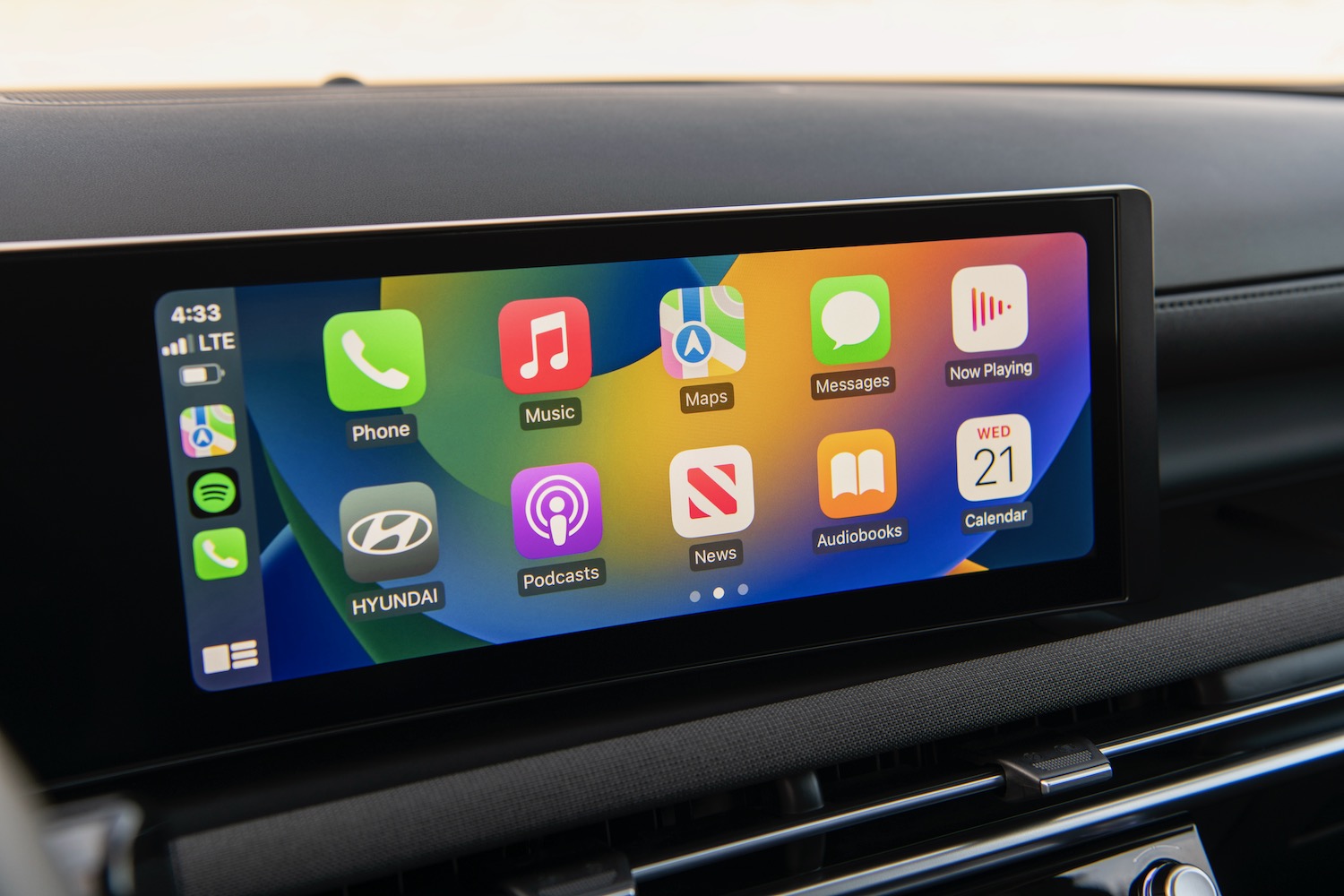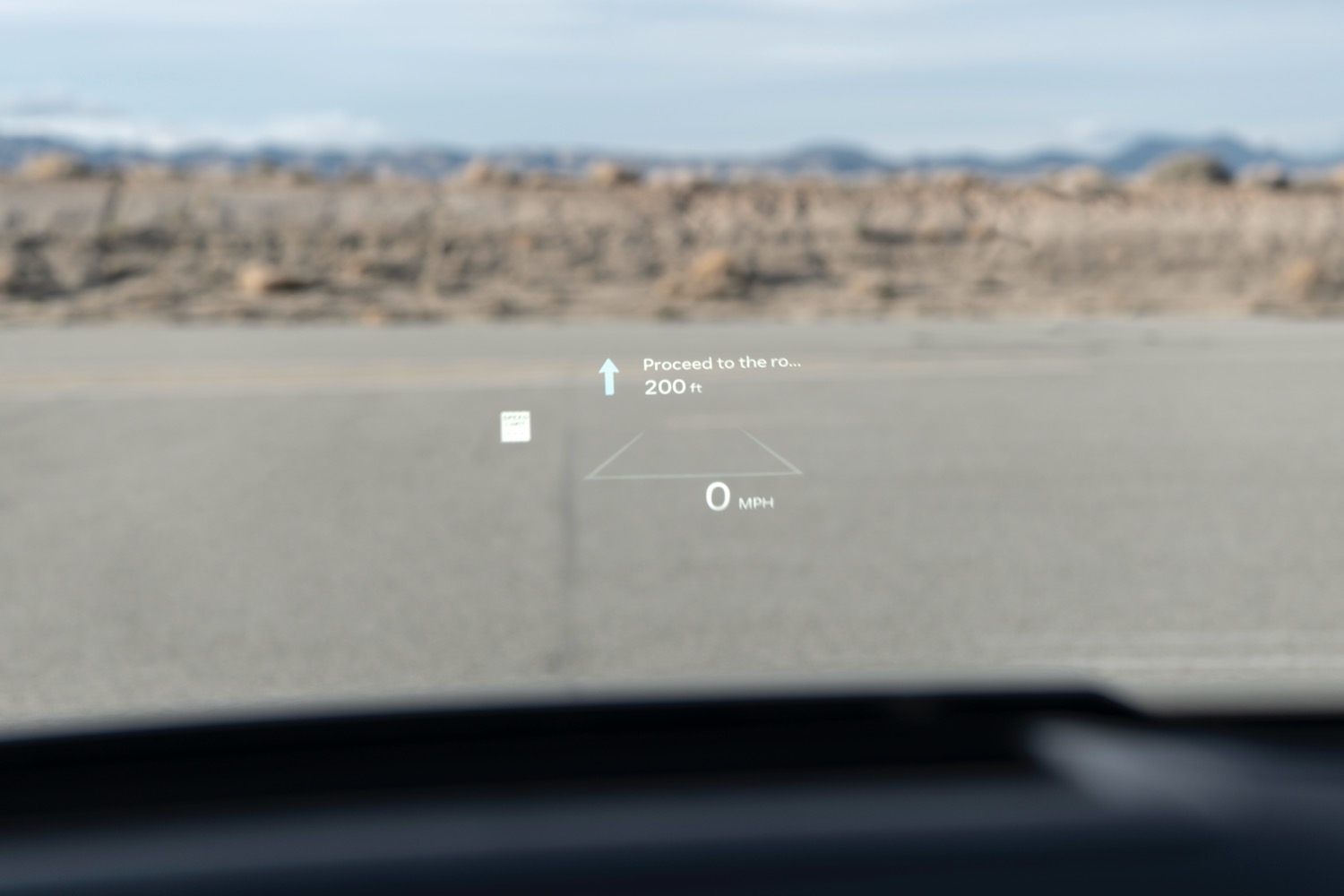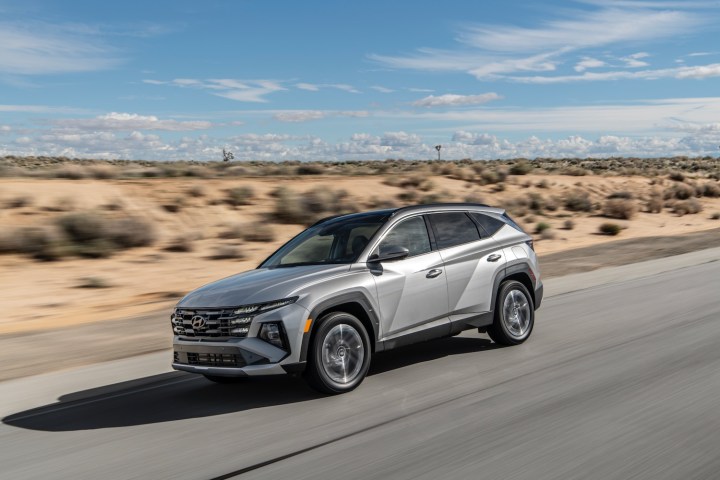
The 2025 Hyundai Tucson Plug-In Hybrid is adding plug-in efficiency to one of the most popular crossover SUVs on the market. For the 2025 model year, it gets its first major update since its launch, gaining a new infotainment display, more software-based features, and some mild styling updates.
Along with the rest of the 2025 Tucson lineup, the Tucson Plug-In Hybrid switches from the previous dual-screen setup to a panoramic curved display that combines a 12.3-inch touchscreen and a 12.3-inch digital instrument cluster. A 12.0-inch head-up display is available as well.
Wireless Apple CarPlay and Android Auto are now standard across the board. Hyundai previously required customers to choose between wireless versions of these smartphone connectivity features, but a new operating system has corrected that. Turn-by-turn directions from CarPlay and Android Auto can also be viewed in the new head-up display.
All 2025 Tucson models also gain over-the-air (OTA) update capability and will be among the first Hyundai models with the automaker’s Hyundai Pay service, which allows drivers to pay for parking or fuel from their vehicles. A 4G LTE Wi-Fi hotspot can support up to five devices, and Digital Key 2 Premium lets phones replace key fobs.
Hyundai claims changes were made to the grille and daytime running lights, from 10 lighting elements to eight larger elements. But you’ll have to look carefully to distinguish between a 2025 Tucson Plug-In Hybrid and the pre-face-lift version, which debuted alongside the current-generation gasoline and hybrid Tucson as a 2022 model.
As before, a 1.6-liter turbocharged four-cylinder engine and an electric motor route power to all four wheels through a six-speed automatic transmission. The electric motor gets a bump in power, though, and total system horsepower increases slightly to 268 hp (torque is unchanged at 258 pound-feet).
The 13.8-kilowatt-hour battery pack is the same size as before, and while Hyundai hasn’t released any electric range estimates, the 2025 Tucson Plug-In Hybrid likely won’t improve on the 2024 model’s 33 miles of electric range. That’s about the same as the related Kia Sportage plug-in hybrid but short of the Toyota RAV4 Prime’s 42 miles. A 7.2-kilowatt Level 2 AC onboard charger can recharge the battery pack in less than two hours, Hyundai claims.
The 2025 Hyundai Tucson Plug-In Hybrid is scheduled to reach dealerships later this summer, with pricing to be announced closer to that time. While Hyundai is still moving ahead with EVs, the automaker believes plug-in hybrids like the Tucson remain a good fit for customers not ready to make the leap to all-electric motoring.
